Some dog breeds have a double coat. This coat consists of 2 layers: a dense undercoat and a long, coarse top coat.
A dog’s hair can come in different varieties but for the most part, it can be broken down into two categories, single coat or double coat.
It’s quite simple:
A dog that has a single coat has one layer of hair.
A dog that has a double coat has 2 layers.
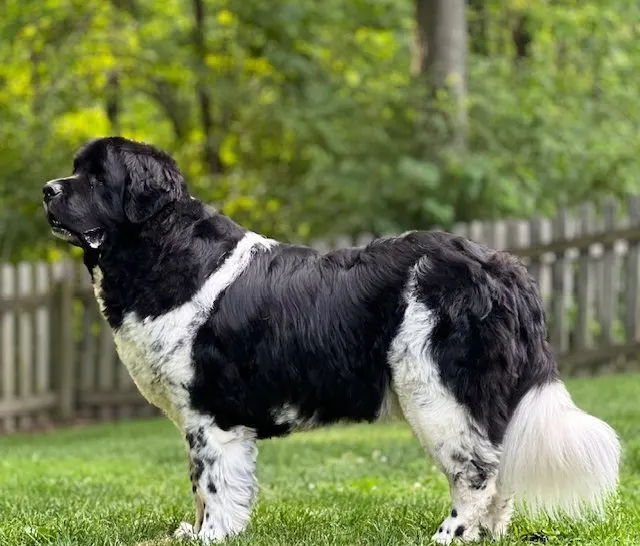
What is a Double Coat?
A type of coat that has 2 layers is a double coat.
Dogs that have a dense undercoat will have short thick hairs that sit under a top coat of longer hairs called guard hairs.
Fluffy dogs have a thick or dense undercoat.
The dense undercoat protects a dog from both hot and cold temperatures, and the topcoat helps to repel moisture and dirt.
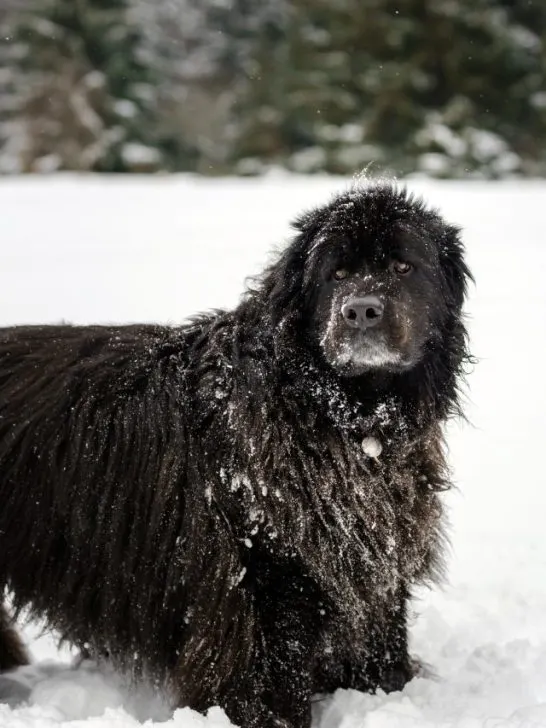
Common Dog Breeds That Have a Double Coat
There are a lot of dogs that can have double coats and they don’t have to be purebred dogs but these are the most common breeds that will carry both coats:
- Newfoundlands
- Golden Retrievers
- Great Pyrenees
- Labrador Retrievers
- Pomeranians
- Siberian Huskies
- Collies
- German Shepherds
- Samoyeds
- Corgis (Pembroke and Cardigan)
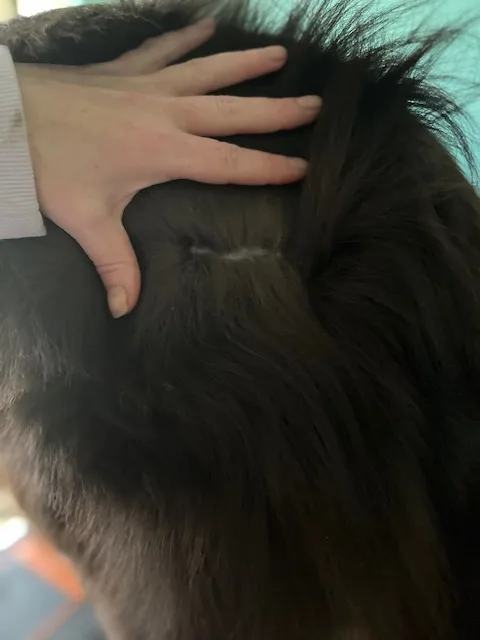
What Does a Double Coat Look Like?
A double coat is 2 layers of hair.
On the top, you will find the guard hairs and below that, you will see a soft, almost wooly, undercoat.
Guard hairs
The top layer consists of the guard hairs.
The guard hairs are the pretty hairs that you see.
They act as a barrier to repel water and catch dirt and debris.
Depending on the breed the guard hairs can be long, short, curly, coarse, corded, smooth or wire.
Guard hairs are the stronger part of the hair and are meant to be permanent.
They are normally not lost during shedding season.
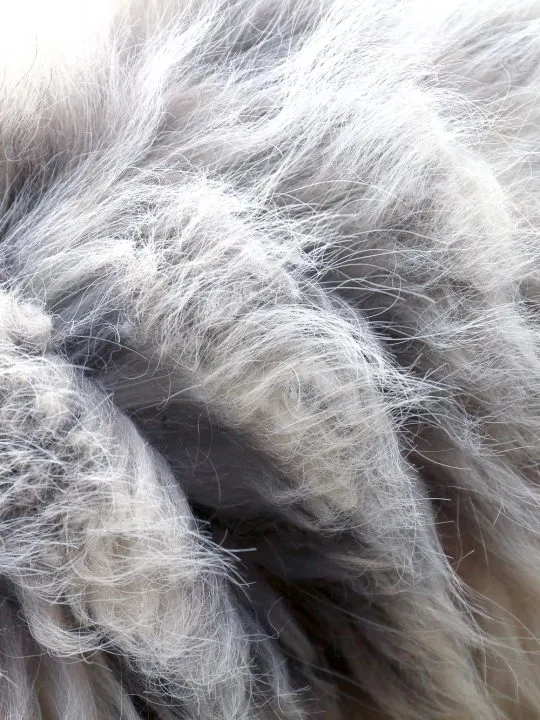
Undercoat
The layer underneath the guard hairs is the undercoat.
It’s softer, lighter in color, shorter and thicker than the guard hairs.
The density of the undercoat depends on the breed. Newfoundlands have a thick dense undercoat.
Usually, the fluffier the dog the denser the undercoat is.
The undercoat has a purpose.
It acts as an insulator for the dog.
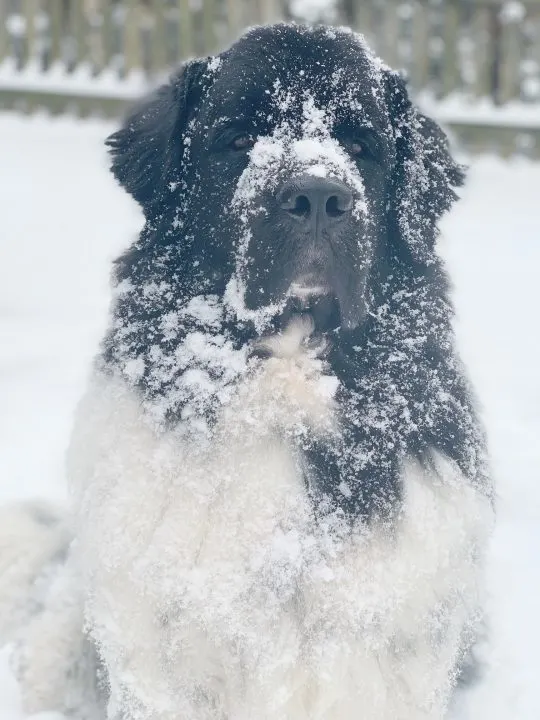
It keeps the dog warm in cold, wet weather and cool in warm, humid weather.
Newfoundland dogs have a water-resistant coat.
When a Newfie is laying outside for hours when it’s snowing, the topcoat (guard hairs) will get wet but if you part the hair and look at the undercoat, it’s usually dry as a bone.
That’s the undercoat doing its job.
A dog with an undercoat will usually blow coat 2-3 times a year, depending on the breed and its environment but breeds such as the Newfie tends to shed year-round.
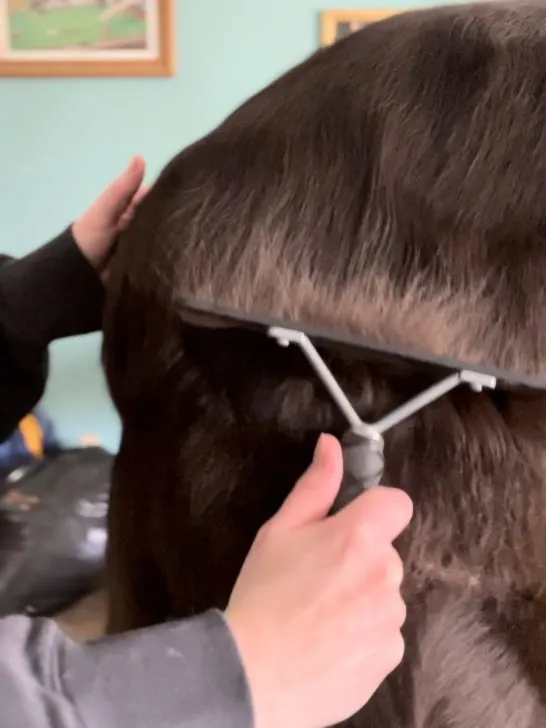
How To Tell If Your Dog Has A Double Coat
If you’re unsure if your dog has a double coat there’s an easy way to find out.
Simply part your dog’s hair with your hands or a comb.
You should be able to see 2 different layers of hair: the topcoat and the thick undercoat.
Some dogs will have more of an undercoat than others and Newfoundlands usually don’t have their full undercoat until they’re at least 18-24 months old.
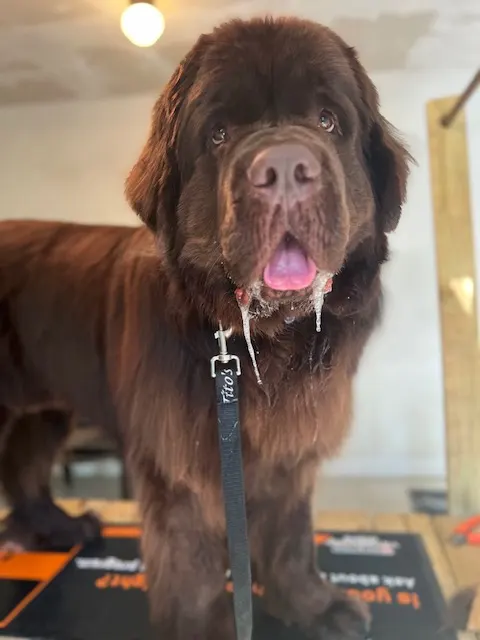
My Brown Newfies is a participant in the Amazon Services LLC Associates Program, an affiliate advertising program designed to provide a means for sites to earn advertising fees by advertising and linking to Amazon.com
Grooming a Double Coat
Grooming a dog with an undercoat can be a full-time job.
The thicker the undercoat the more maintenance it will need but most double-coated breeds need to be brushed weekly, some daily, and more often when they are blowing their coat.
If they aren’t brushed regularly with a good dog comb or rake, painful hair mats will form and the dog’s skin will not be able to breathe creating moisture that will create skin issues such as hot spots.
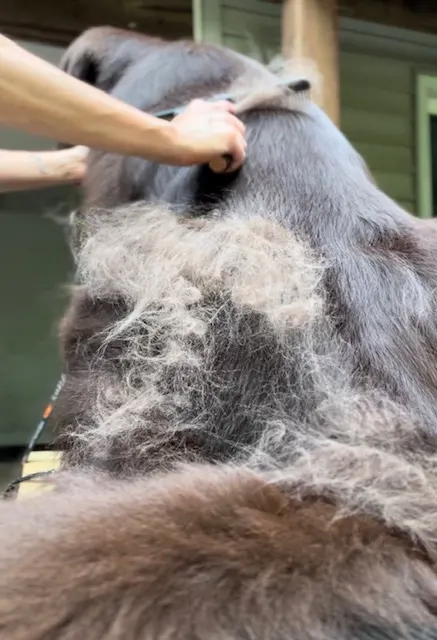
Mats can also be very painful to the dog because they pull on the skin.
In the summer months, some owners will line comb or line brush a dog that has a very dense undercoat.
Line combing is basically where you lift up the guard hairs and comb out the loose undercoat.
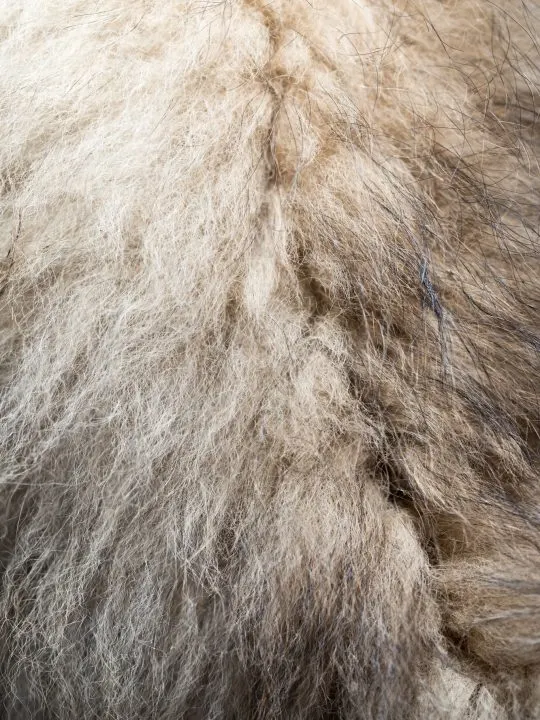
It’s what I do with Sherman and Leroy.
It’s as tedious as it sounds but once you get the hang of it you’ll move along pretty fast.
Line combing is how many Newfoundland owners prepare their dogs for the summer.
Removing as much of the undercoat as possible will help cool airflow through the guard hairs and reach the skin while guard hairs will keep the dog protected from the harmful rays of the sun.
(Check out our post on common grooming tools used for the Newfoundland.)
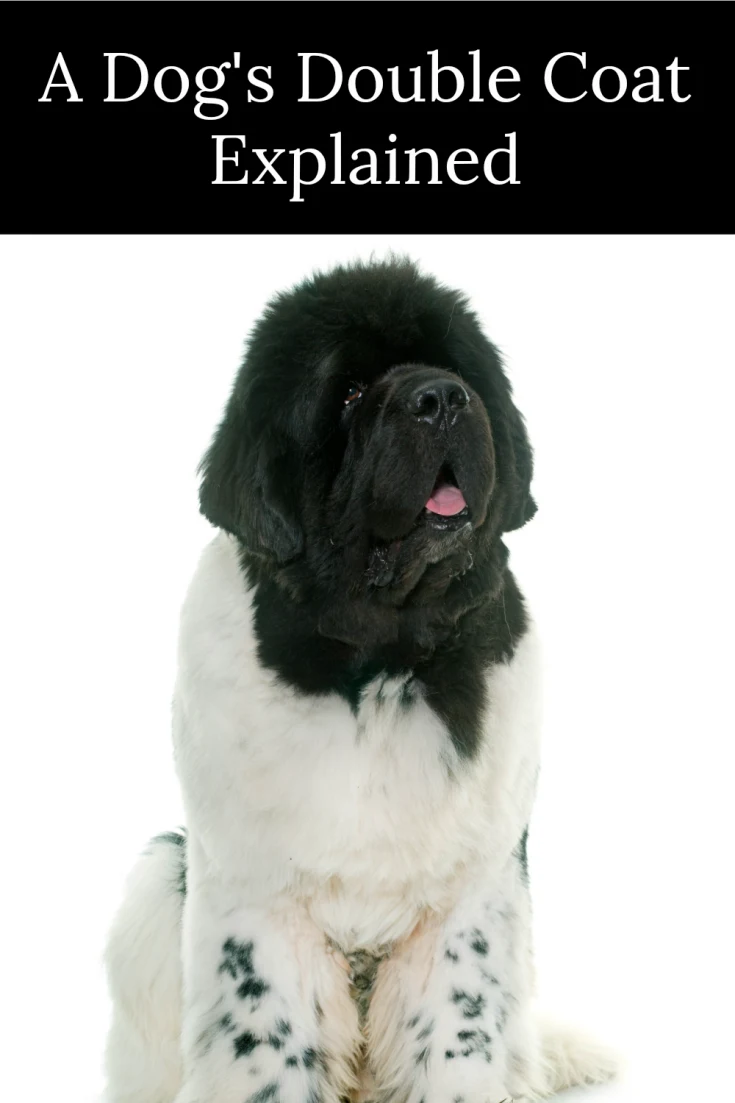
Shaving a dog’s coat in the summer is a controversial issue.
I think in our community we have people who tend to confuse the words shave and clip.
When I think of the word shave I think of bald, down to the skin.
When I think of the word clip I think of clipping the coat to a different length with clippers.
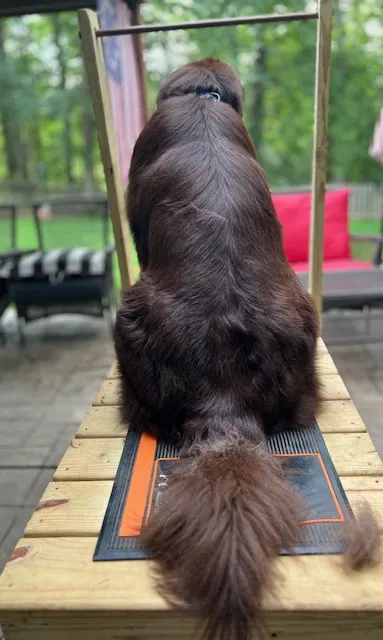
Shaving a Double Coat Down to the Skin.
Unless medically necessary it’s normally not recommended to shave a dog with a double coat down to the skin because it can expose their skin to harmful UV rays which can cause serious burns.
It can also cause a dog to overheat when they are exposed to the hot sun because instead of the guard hairs being there to deflect the sun, it gets directly absorbed into the skin.
If you sit out in the sun without any protection on your skin, you get sunburned and your body temperature rises.
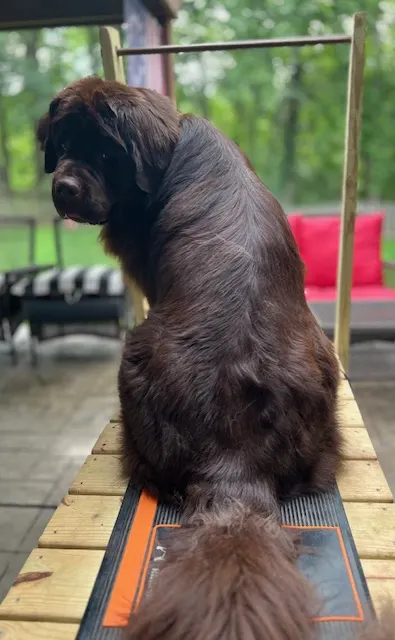
The same goes for dogs but they get hotter faster.
Humans and dogs each have 3 layers of skin BUT the epidermis, the outer layer of the skin, is different.
Stay with me here.
The epidermis layer of skin is divided up into layers of dead cells.
These cells are what protect us.
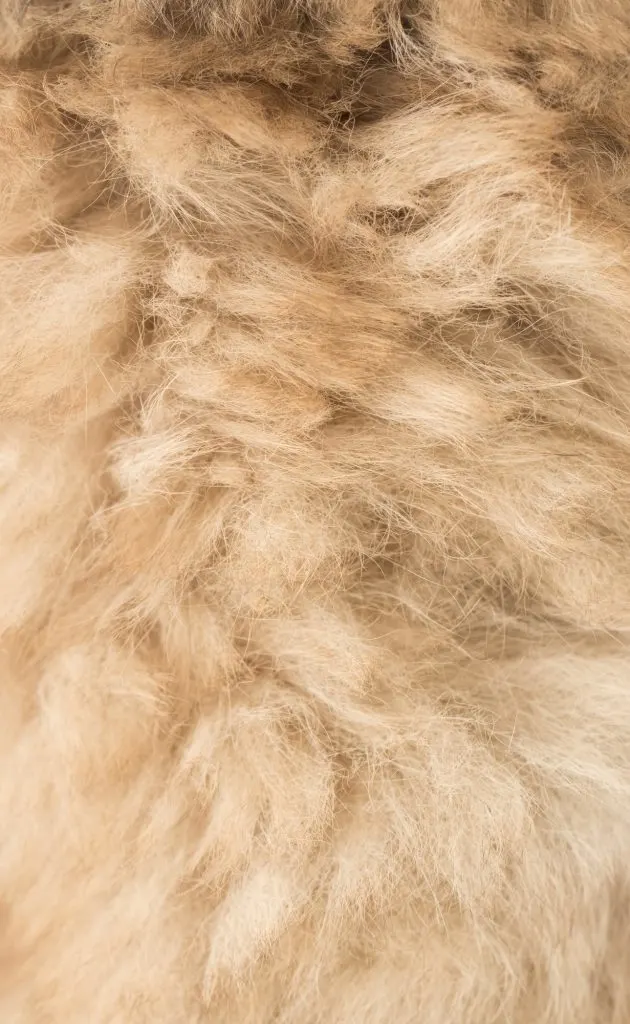
The outermost layer of the HUMAN epidermis has more layers than the CANINE epidermis.
This means that the heat will penetrate through a dog’s skin and into their bodies faster than it does on humans.
This is why dogs need their coat to protect and insulate them.
Not to mention that dogs don’t sweat as humans do.
If your dog isn’t going to be laying in the direct sun, which most Newfies won’t be, this won’t be an issue.
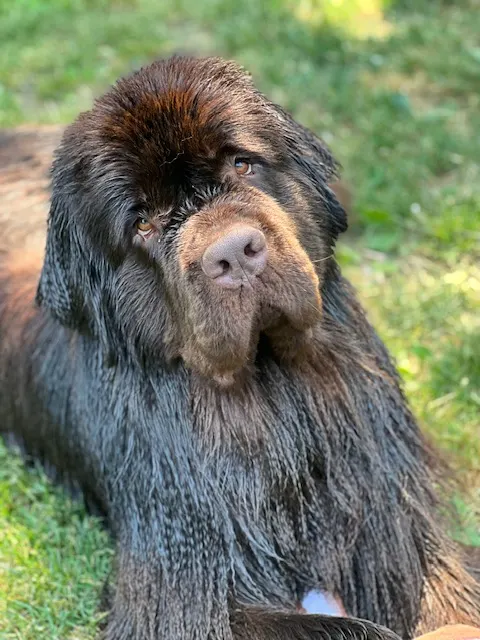
What Happens When a Double Coat is Shaved Down to the Skin?
It grows back but if it’s shaved to the skin, that layer will be vulnerable until it does.
The undercoat grows back first and then the guard hairs push through.
So the thickest part of the hair will grow back FIRST.
Guard hairs protect and are meant to be permanent and take longer to grow this is why double-coated puppies look fluffier than adult double-coated dogs.
That is what a dog’s undercoat is intended to do.
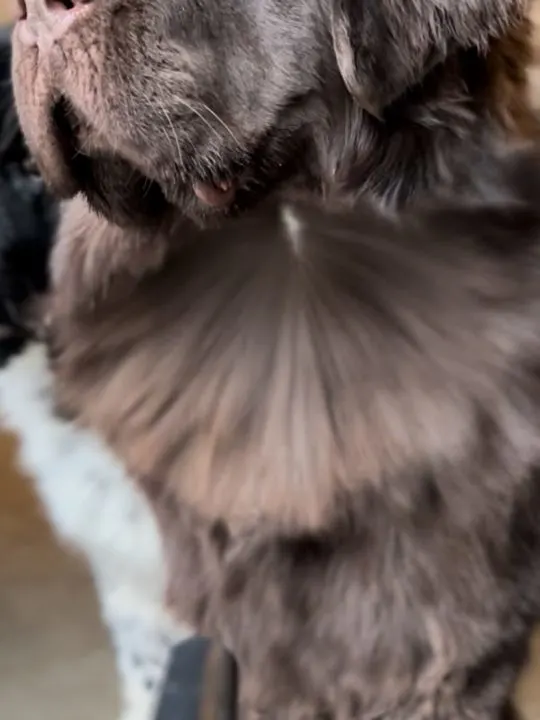
Let’s face it, most dog owners aren’t having their dog shaved down to the skin, they’re are having it clipped shorter during the warmer months and there’s no harm in that.
The dog has a summer cut, which is a shorter cut that still leaves the guard hairs intact and does not damage the undercoat, to keep them more comfortable but they are not shaving down to the skin.
What Type of Dogs Should be Clipped Short or Shaved?
Dogs that have severe matting or skin conditions may often be shaved.
This will give the dog relief from painful matting and help the skin heal faster with allergy issues.
Senior dogs that are unable to stand for long periods of time to be groomed may be clipped shorter to avoid matting.
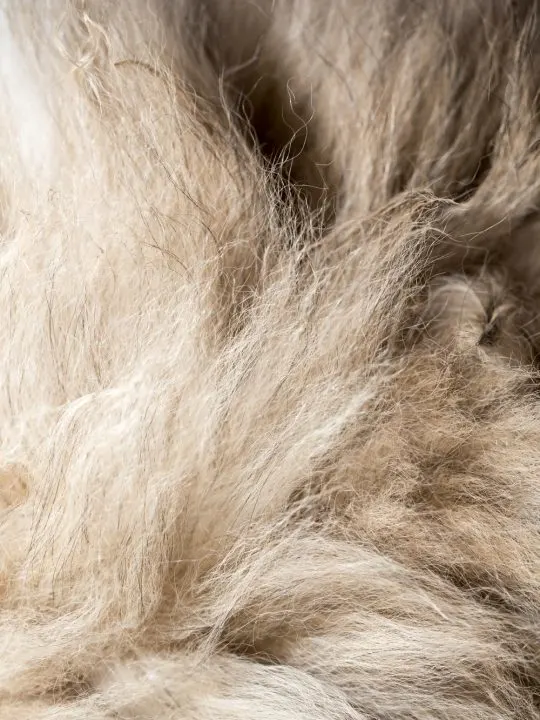
Many owners that have dogs that don’t tolerate heat and humidity well may opt to have their dog clipped to a shorter length during the summer months to make them more comfortable.
It’s important to remember that even when a dog has its coat clipped shorter it will still need to be brushed and combed regularly.
Just because a dog has less hair doesn’t mean that they need less grooming.
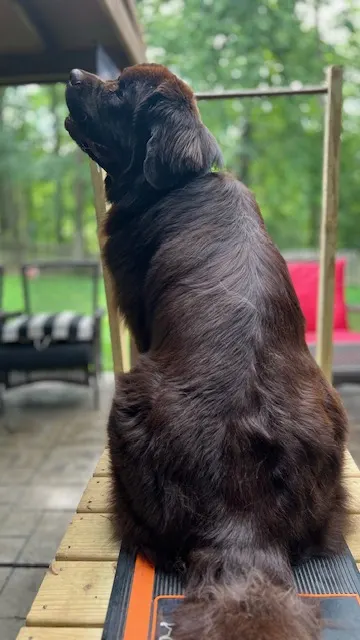
How Long Does it Take for a Dog to Grow its Coat Back When It’s Shaved?
That depends on the dog and the coat but most dogs will start to grow their coat back in a few weeks to a few months.
The undercoat is going to grow back first so your dog’s hair won’t look as shiny and smooth.
The guard hair needs to push through the undercoat which is why it’s important to keep the undercoat brushed so they coat can grow in easier.
Related Articles
Line Combing Your Double Coated Breed
Rumin8
Sunday 19th of February 2023
I think you need to reanalyze you house wall and insulation analogy. In the summer you do not have the furnace in your house running. Any animal always has their 'furnace' running. In homeothermic animals (mammals and birds) body temperature is regulated, usually in the upper 90s farenheit (upper 30s C). So until the outside temperature exceeds that set body temperature heat is always moving from the body to the environment. A heavy coat will slow that transfer, and a tighter gradient will slow the outward flow of heat as well. Place an animal in an environment at the same t as their body and there is no gradiant to allow generated heat to flow out of the body. At an environmental temperature at or above body temperature, animals can release heat mainly by evaporation (sweating, panting, licking fur). Some animals like Camels allow their temperature to rise to which helps conserve water. It is ture that a thicker coat will slow the entry of heat from the environment into the body when environmental t exceeds body t, but ultimately long term exposure to that higher outside t can only be dealt with by evaporation or change to a cooler (night cooling, shade, burrowing etc.). The other way to gain heat is by radiation from sun or loose heat by radiation to the night sky, guard hairs certainly help repel that radiation and form a higher t shell that fur hairs can insulate against.
Jen
Monday 20th of February 2023
Thanks for the great education!
Caitlin
Tuesday 16th of April 2019
Great article thank you! I now know a lot more about double coats. Two coats doesn't seem enough for the amount of fluff there ;P
Rosemary
Sunday 20th of November 2016
Hi Jennifer,
This is my first visit here.
What a great article on double coats!
I have 2 German Shepherds and 1 GSD cross, who all have double coats - yes, even my limited edition Lexi inherited a double coat.
It's coat blowing season here in our house right now and we're combing twice daily. I've also found that giving my 3 baths just as the blowing season starts helps loosen their hair making it easier to remove.
A friend of mine has 2 sibes and I've not been able to convince her that shaving her dogs is a bad idea. We live in Africa, so the summer sun is harsh here. Now that you've said it too, perhaps she'll listen!
CATHY BENNETT
Monday 16th of May 2016
Those double coats are so thick and fluffy, but I always imagined they could be "double work" too!
Misty Shores Chesapeakes
Saturday 14th of May 2016
Nice explanation of double coated breeds.